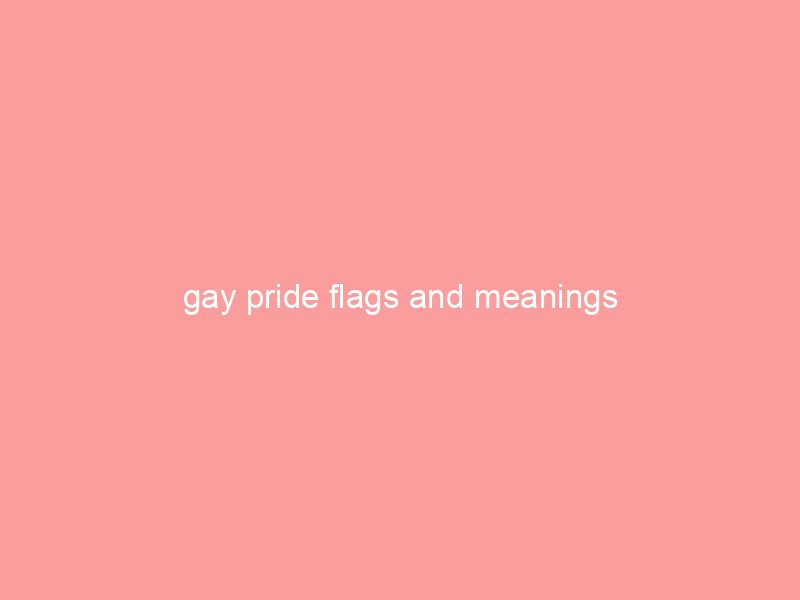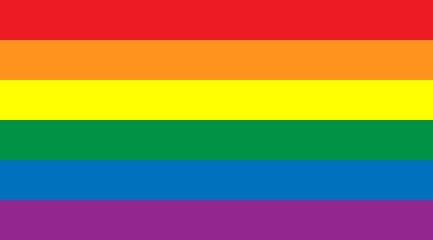
Introduction to Gay Pride Flags
Gay pride flags are powerful symbols that represent the LGBTQ+ community’s fight for equality, acceptance, and pride. These vibrant flags have become iconic emblems of the LGBTQ+ movement, serving as a visual representation of diversity and inclusivity.
Overview of the significance and history of gay pride flags
The history of gay pride flags dates back to the late 1970s when artist Gilbert Baker designed the first rainbow flag. The rainbow flag, also known as the Pride flag, quickly became a universal symbol for the LGBTQ+ community. Each color in the flag holds a specific meaning:
- Red: Represents life.
- Orange: Symbolizes healing.
- Yellow: Stands for sunlight and happiness.
- Green: Represents nature.
- Blue: Symbolizes serenity and harmony.
- Purple: Represents spirit and diversity.
Over time, different variations of the rainbow flag have emerged to represent specific identities within the LGBTQ+ community. Some of these variations include:
- Transgender Pride Flag: Consists of light blue, pink, and white stripes, representing transgender individuals.
- Bisexual Pride Flag: Features three horizontal stripes: pink, purple, and blue, representing attraction to both genders.
- Pansexual Pride Flag: Comprises three horizontal stripes: pink, yellow, and blue, representing attraction regardless of gender.
These flags serve as powerful symbols that promote visibility, unity, and celebration within the LGBTQ+ community. They are proudly displayed during Pride Month and other LGBTQ+ events worldwide.
By understanding the significance and history behind these flags, we can foster inclusivity and support for the LGBTQ+ community, promoting a world where everyone can live authentically and without discrimination.
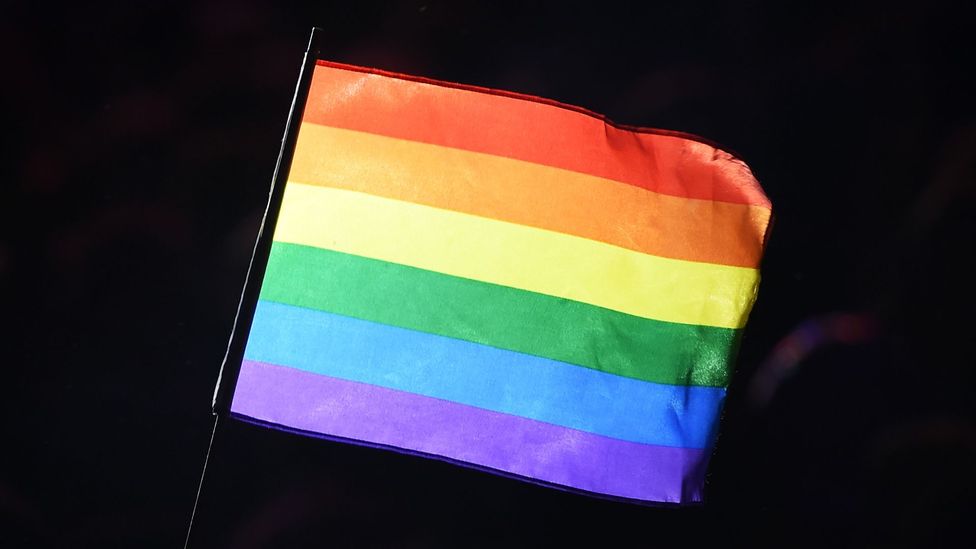
Rainbow Pride Flag
Meaning and symbolism of the iconic rainbow pride flag
The rainbow pride flag is a powerful symbol of LGBTQ+ pride and unity. Created by artist and activist Gilbert Baker in 1978, the flag has become synonymous with the LGBTQ+ community and their fight for equality and acceptance. The flag consists of six vibrant colors: red, orange, yellow, green, blue, and purple, arranged horizontally.
Each color of the rainbow pride flag carries its own meaning and symbolism:
- Red represents life. It signifies the passion, energy, and vitality of the LGBTQ+ community.
- Orange represents healing. It symbolizes the progress made in the fight against discrimination and the hope for a better future.
- Yellow represents sunlight. It represents happiness, positivity, and the joy of being true to oneself.
- Green represents nature. It symbolizes growth, harmony, and the connection between humans and the environment.
- Blue represents serenity. It signifies peace, tranquility, and the openness to new possibilities.
- Purple represents spirit. It symbolizes the diversity within the LGBTQ+ community and the spirit of solidarity and resilience.
The rainbow pride flag is not only a visual representation of LGBTQ+ pride but also a powerful tool for raising awareness and promoting inclusivity. It has become an international symbol of love, acceptance, and celebration of diversity.
By proudly displaying or wearing the rainbow pride flag, individuals show their support for LGBTQ+ rights and send a message of inclusivity to others. The flag serves as a reminder that everyone deserves to be treated with respect and dignity, regardless of their sexual orientation or gender identity.
Overall, the rainbow pride flag is a symbol of hope, unity, and pride for the LGBTQ+ community worldwide.
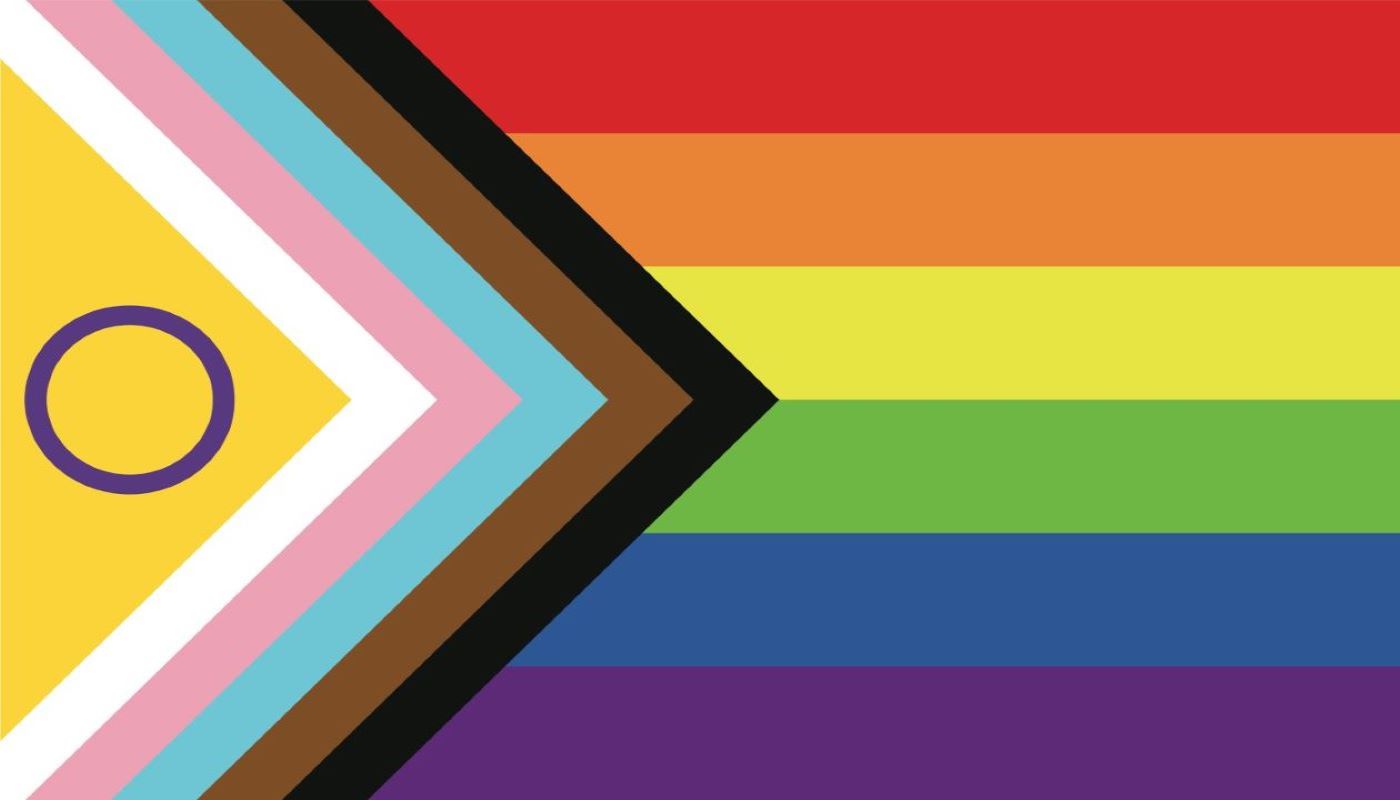
Transgender Pride Flag
Interpretation and representation of the transgender pride flag
The transgender pride flag is a symbol that represents the transgender community and their fight for equality and acceptance. It consists of five horizontal stripes, with light blue on the top and bottom, pink on the second and fourth, and white in the center. Each color holds a specific meaning that reflects the experiences and struggles of transgender individuals.
The light blue stripes represent traditional baby blue, which is often associated with baby boys. It symbolizes the traditional male gender assigned at birth for transgender individuals who identify as male. The pink stripes represent traditional baby pink, typically associated with baby girls, symbolizing the traditional female gender assigned at birth for transgender individuals who identify as female.
The white stripe in the center represents those who are transitioning or consider themselves to have a neutral or undefined gender identity. It signifies the combination of all genders and serves as a reminder that gender is not binary but exists on a spectrum.
The transgender pride flag was created by Monica Helms in 1999 to provide visibility and recognition to the transgender community. It has since become an important symbol of pride, unity, and support for transgender individuals worldwide.
By displaying and understanding the meaning behind the transgender pride flag, we can show our support for transgender rights and promote inclusivity and acceptance for all genders.

Bisexual Pride Flag
Explanation of the colors and meaning behind the bisexual pride flag
The bisexual pride flag is a symbol of visibility and support for the bisexual community. It was designed by Michael Page in 1998 to represent bisexual individuals and their unique experiences. The flag consists of three horizontal stripes: pink, purple, and blue.
The pink stripe represents same-sex attraction, while the blue stripe represents opposite-sex attraction. These two colors are placed on either end of the flag to symbolize the attraction to both genders that bisexual individuals may experience.
The purple stripe in the middle represents the blending of same-sex and opposite-sex attraction. It serves as a reminder that bisexuality is a valid sexual orientation that encompasses a wide range of attractions.
The design of the bisexual pride flag aims to promote inclusivity and raise awareness about bisexuality. It provides a sense of belonging and unity for individuals who identify as bisexual, helping them feel seen and accepted within the LGBTQ+ community.
By displaying the bisexual pride flag, individuals can show their support for bisexual rights and equality. It serves as a powerful symbol that encourages conversations about bisexuality and challenges stereotypes or misconceptions.
Overall, the bisexual pride flag plays a crucial role in fostering visibility, understanding, and acceptance for bisexual individuals. It represents their unique experiences and serves as a reminder that bisexuality is an important part of the diverse LGBTQ+ community.

Pansexual Pride Flag
Symbolism and interpretation of the pansexual pride flag
The pansexual pride flag is a vibrant and meaningful symbol of the pansexual community. It was designed to represent individuals who are attracted to people of all genders, regardless of their gender identity. The flag consists of three horizontal stripes – pink, yellow, and blue.
Each color on the pansexual pride flag holds a specific meaning. The pink stripe represents attraction to females, the blue stripe represents attraction to males, and the yellow stripe represents attraction to non-binary individuals or those who do not fit within the gender binary.
The flag’s design is intentional and aims to promote inclusivity and visibility for pansexual individuals. It serves as a powerful symbol that helps raise awareness and foster a sense of belonging within the LGBTQ+ community.
The pansexual pride flag also plays a crucial role in educating others about pansexuality. By displaying the flag or discussing its symbolism, individuals can start conversations and create a more inclusive environment for all sexual orientations.
It is important to note that the pansexual pride flag is just one representation of the pansexual community. Different individuals may have different interpretations or preferences when it comes to symbols of their identity. It is always best to respect and listen to individuals’ personal experiences and perspectives.
In conclusion, the pansexual pride flag is a powerful symbol that represents the diverse experiences and attractions of pansexual individuals. Its vibrant colors and meaningful symbolism help promote inclusivity, visibility, and understanding within the LGBTQ+ community.

Asexual Pride Flag
Meaning and significance of the asexual pride flag
The asexual pride flag is a symbol of identity and pride for individuals who identify as asexual. It was created to represent the asexual community and raise awareness about asexuality as a valid sexual orientation.
The flag consists of four horizontal stripes: black, gray, white, and purple. Each color holds its own significance within the asexual community.
The black stripe represents asexuality itself. It symbolizes the absence of sexual attraction, highlighting that asexual individuals do not experience sexual desire towards others.
The gray stripe represents gray-asexuality and demisexuality. Gray-asexuality refers to individuals who occasionally experience sexual attraction, while demisexuality refers to individuals who only experience sexual attraction after forming an emotional bond.
The white stripe represents sexuality, indicating that everyone’s journey and experiences with sexuality are unique and valid.
The purple stripe represents community. It symbolizes the solidarity and support within the asexual community, fostering a sense of belonging and acceptance.
The asexual pride flag serves as a visual representation of asexuality, helping to increase visibility and understanding. It allows individuals who identify as asexual to express their pride, find support, and connect with others who share similar experiences.
By embracing the asexual pride flag, individuals can promote inclusivity, educate others about asexuality, and work towards creating a more accepting society for all sexual orientations.
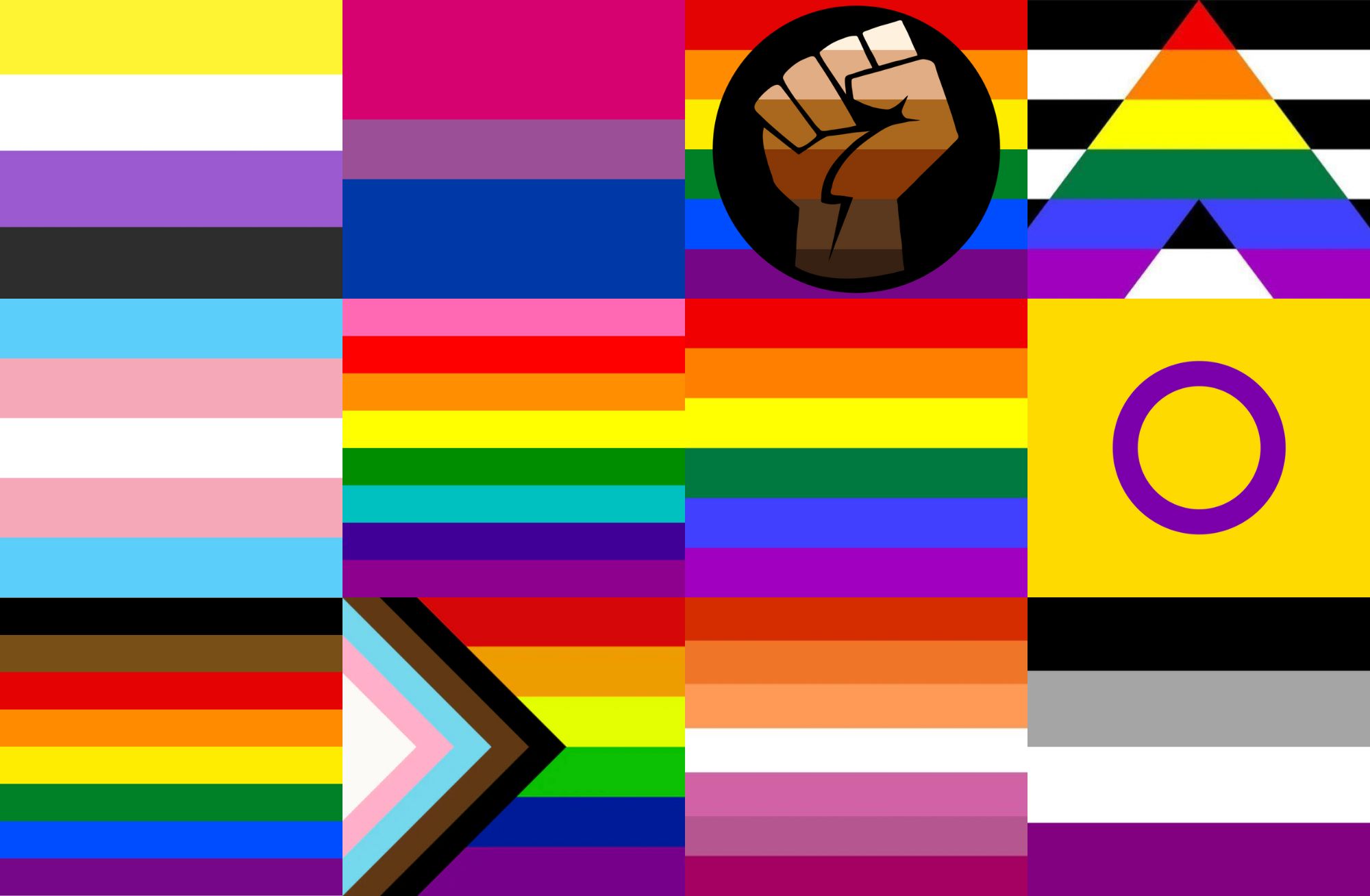
Genderqueer Pride Flag
Interpretation and symbolism of the genderqueer pride flag
The genderqueer pride flag is a symbol of the genderqueer community, which includes individuals who do not identify exclusively as male or female. It represents a diverse range of gender identities outside of the traditional binary system.
The flag consists of three horizontal stripes: lavender, white, and green. Each color holds its own significance and meaning.
The lavender stripe represents androgyny and is associated with individuals who identify as both masculine and feminine or neither. It symbolizes the blending of genders and the fluidity of gender expression.
The white stripe represents agender or gender neutrality. It represents individuals who do not identify with any particular gender or reject the concept of gender altogether.
The green stripe represents non-binary identities. It encompasses individuals who identify as a combination of genders or outside of the male/female binary. It symbolizes growth, renewal, and a sense of community.
The genderqueer pride flag serves as a powerful symbol of visibility and acceptance for those who identify as genderqueer. It promotes inclusivity and challenges societal norms surrounding gender.
By displaying the genderqueer pride flag, individuals can show support for the genderqueer community and create a safe space for people to express their authentic selves.
It is important to remember that flags are just one aspect of representation, and each individual’s experience with their gender identity is unique. The genderqueer pride flag serves as a powerful symbol that helps raise awareness and foster understanding for the diverse experiences within the genderqueer community.
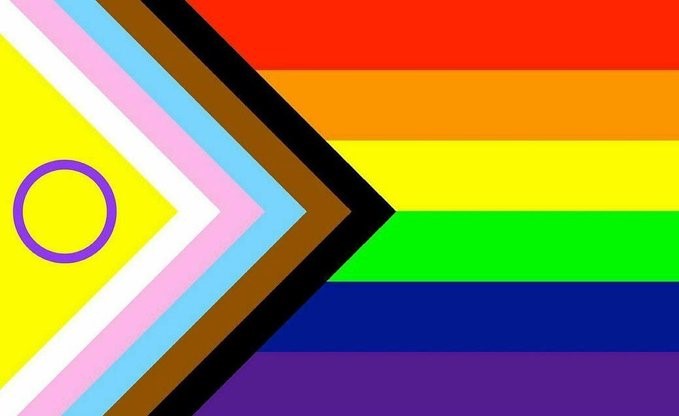
Non-Binary Pride Flag
Explanation of the non-binary pride flag and its representation
The non-binary pride flag is a symbol that represents individuals who identify outside of the traditional gender binary of male and female. It was created to provide visibility and support for those who identify as non-binary, genderqueer, or genderfluid.
The flag consists of four horizontal stripes. The top stripe is yellow, representing genders outside of the binary. The second stripe is white, symbolizing those who embrace many or all genders. The third stripe is purple, representing those who feel a mix of both masculine and feminine energies. Finally, the bottom stripe is black, symbolizing those who identify as agender or without gender.
The non-binary pride flag serves several important purposes. Firstly, it provides a sense of community and belonging for individuals who may feel marginalized or misunderstood due to their gender identity. Seeing the flag can help them feel seen and validated.
Additionally, the flag raises awareness about non-binary identities and challenges societal norms surrounding gender. By displaying the flag or using it in various contexts, individuals can spark conversations and educate others about the diversity of gender identities.
It’s important to note that the non-binary pride flag is just one symbol among many in the LGBTQ+ community. Each flag represents a unique identity or group within the community and helps foster inclusivity and acceptance.
Overall, the non-binary pride flag serves as a powerful symbol of visibility, support, and empowerment for individuals who identify outside of the traditional gender binary. It represents a diverse range of experiences and promotes understanding and acceptance in society.
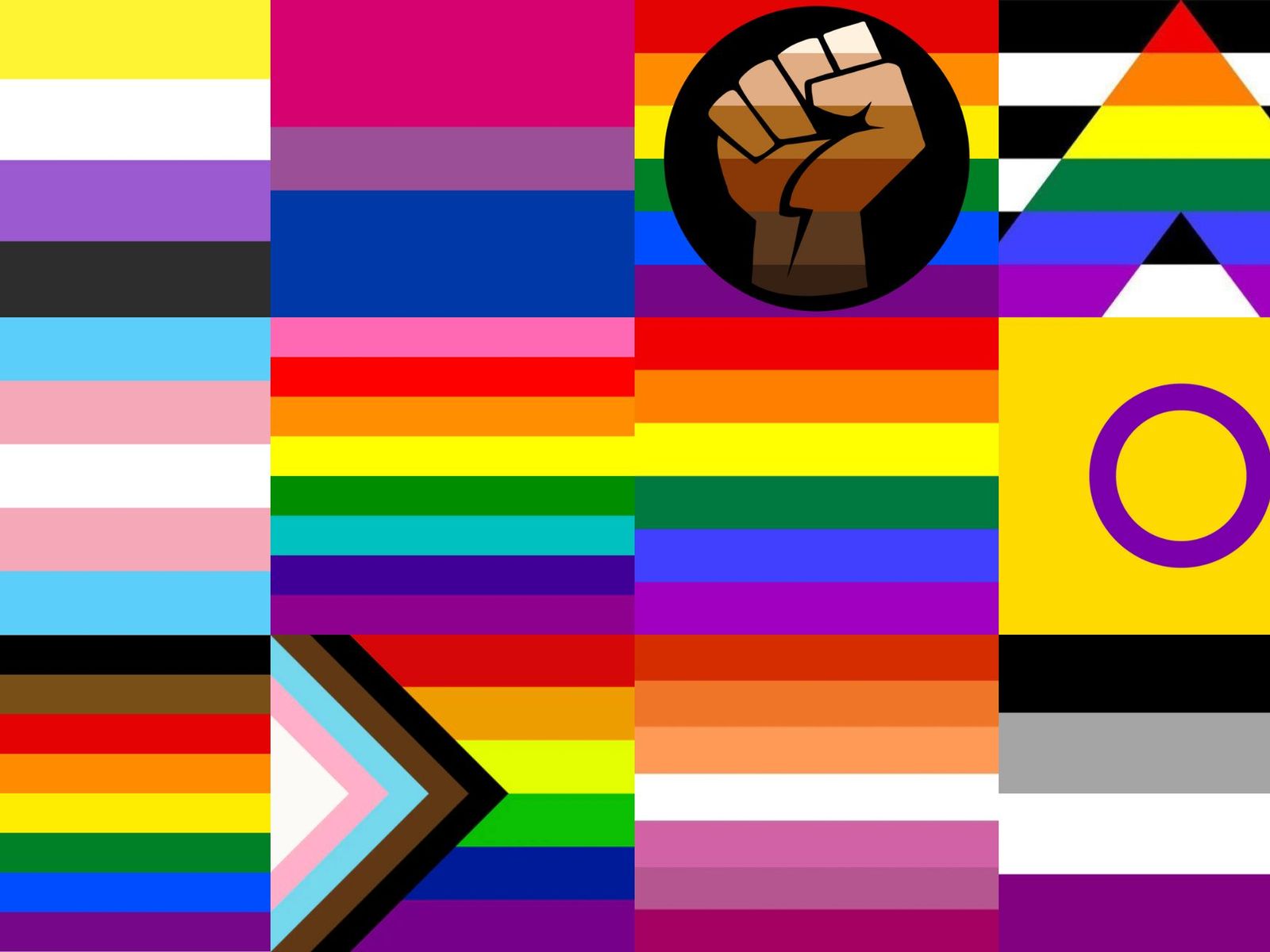
Conclusion
In conclusion, the various gay pride flags hold significant meaning and symbolism for the LGBTQ+ community. Each flag represents a different aspect of the community’s history, struggles, and achievements. From the iconic rainbow flag to the more specific flags representing transgender, bisexual, and other identities, these flags serve as powerful symbols of pride, unity, and visibility.
Summary of the various gay pride flags and their meanings
- Rainbow Flag: The most recognized symbol of LGBTQ+ pride, representing diversity and inclusivity.
- Transgender Pride Flag: Designed to represent transgender individuals, with blue representing boys/men, pink representing girls/women, and white representing those who are non-binary or transitioning.
- Bisexual Pride Flag: Consisting of three horizontal stripes in pink, purple, and blue, representing attraction to both genders.
- Pansexual Pride Flag: Composed of three horizontal stripes in pink, yellow, and blue, symbolizing attraction to all genders.
- Asexual Pride Flag: Consisting of four horizontal stripes in black, gray, white, and purple, representing asexuality and gray-asexuality.
- Genderqueer Pride Flag: Composed of three horizontal stripes in lavender, white, and dark green, symbolizing non-binary and genderqueer identities.
Frequently Asked Questions
Q: Are there other pride flags besides the ones mentioned?
A: Yes! There are numerous pride flags representing different identities within the LGBTQ+ community. Some examples include the lesbian pride flag, non-binary pride flag, intersex pride flag, and more.
Q: Can anyone use these flags?
A: While these flags were created to represent specific identities within the LGBTQ+ community, anyone can show support by displaying these flags or using their colors to promote inclusivity and acceptance.
Q: Where can I purchase these flags?A: Pride flags can be found online through various retailers, LGBTQ+ organizations, or local pride events. It’s important to support businesses and organizations that are committed to LGBTQ+ rights and equality.
